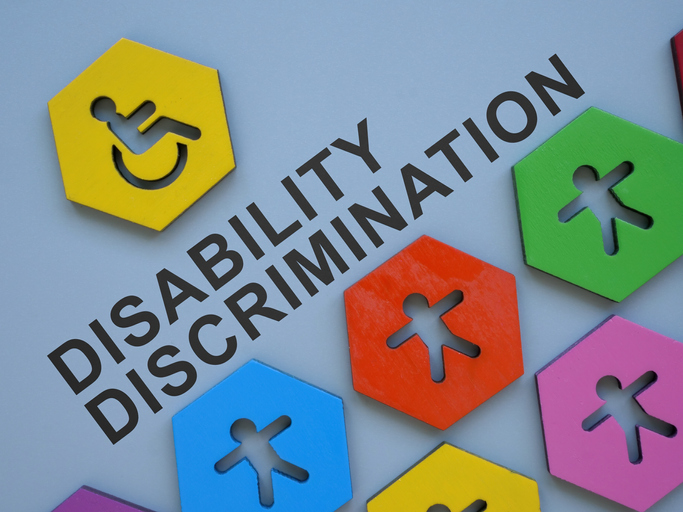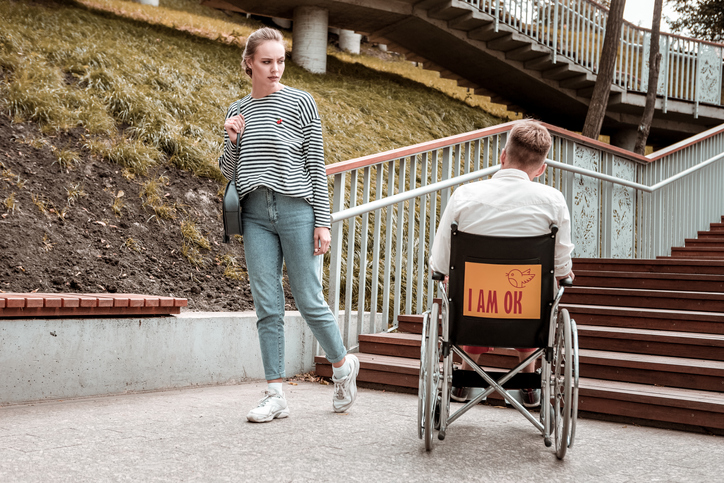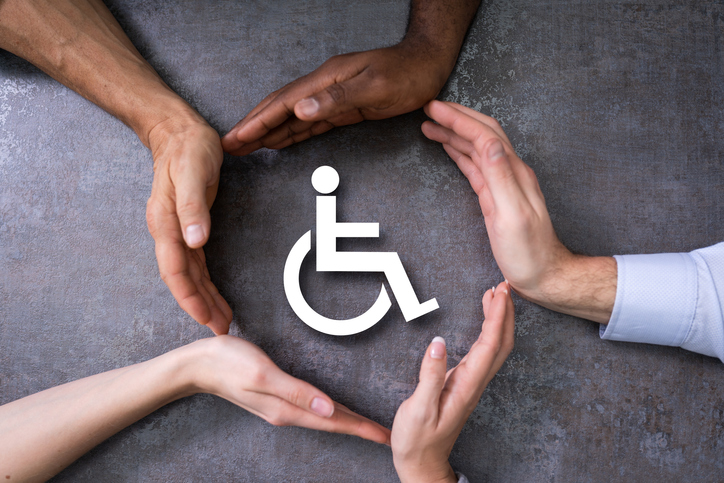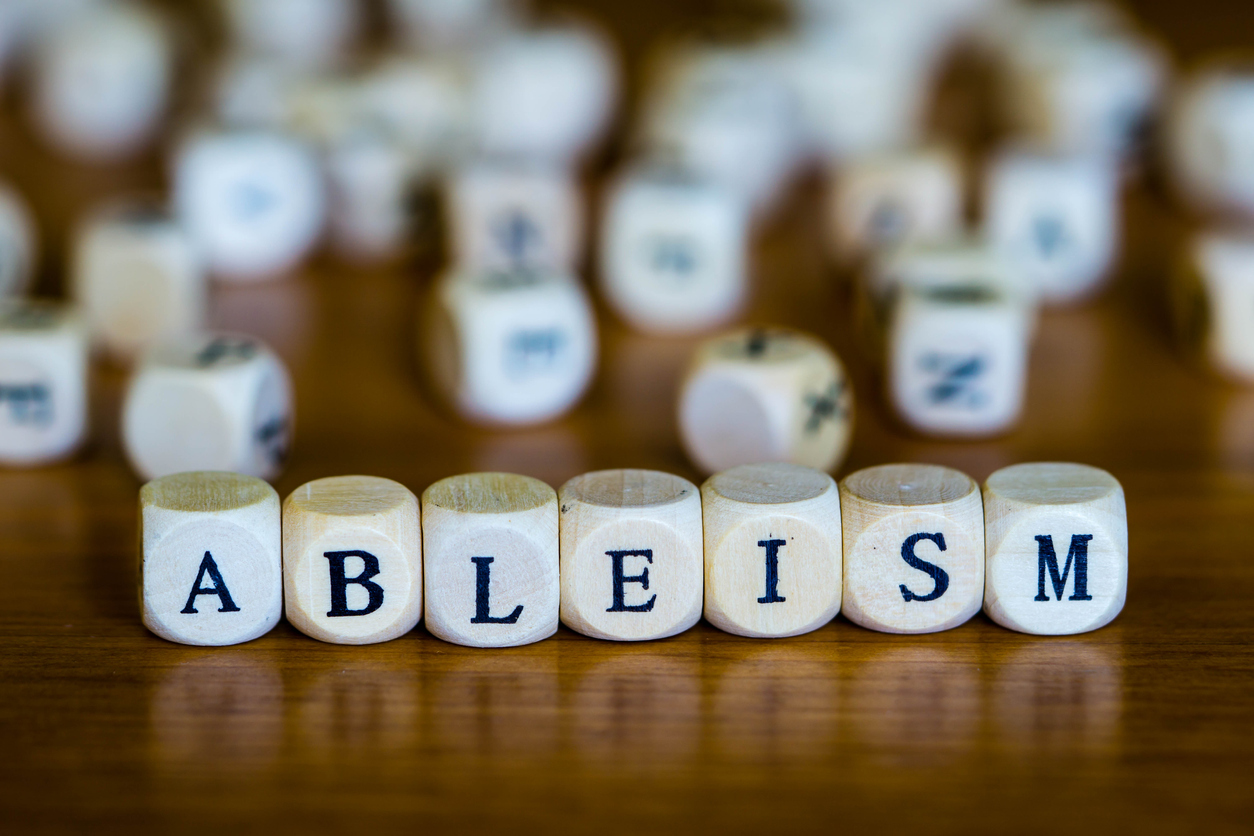Living with Chronic Pain
Types of Ableism
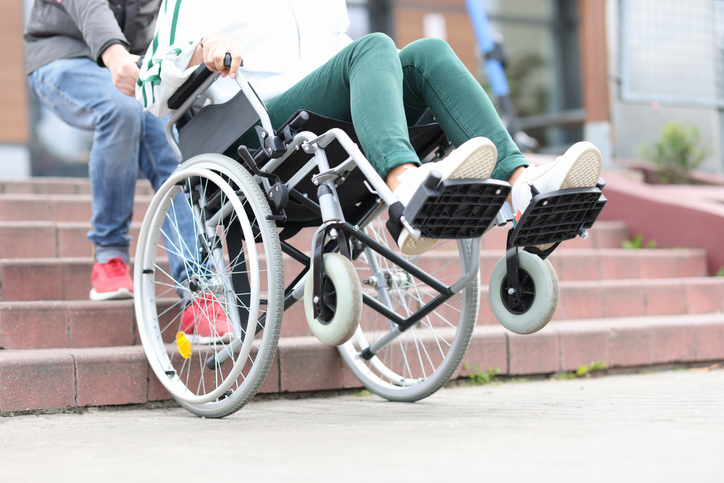
What is ableism?
Ableism is defined as any prejudice, bias or discrimination that is targeted toward disabled people. It is a set of beliefs that favors able-bodied individuals and discriminates against disabled individuals. Ableists may treat those with chronic pain or other disabilities differently, and often negatively.
This type of prejudice stems from the structure of society. Disabled individuals have long been considered inferior to others, which has placed them into a lower social class. Ableism can present in many ways. Examples include the following:
- A well-meaning comment from a friend (“But you don’t look autistic!”)
- A nasty comment from a stranger (slurs, bullying)
- Mindless actions (petting someone’s service dog without their permission)
- Intentional acts of harm (kicking over a person’s cane)
- Physically structural barriers (a lamp post in the middle of the sidewalk)
- Invisible barriers (not allowing a person to use a fidget toy during class or not having subtitles available for a movie)
Levels of ableism
Ableism occurs in society on a daily basis. The three main levels of ableism include institutional, interpersonal and internalized.
- Institutional ableism
Institutional ableism frequently exists in organizations or institutional structures, such as the medical system, the educational system, or the workforce. An example includes the lack of accessibility present in the higher education system. Individuals are expected to put forth a lot of time and effort into their schoolwork. If they are struggling and need access to accommodations, they must first prove their diagnosis. However, obtaining a diagnosis takes time and energy for scheduling appointments, physician visits, completing forms, and making phone calls. This limits time spent on schoolwork or other opportunities related to education, such as conferences, panels or research. - Interpersonal ableism
Ableism that occurs in everyday social interactions and relationships is referred to as interpersonal ableism. Examples include a group of friends deciding to go to places that aren't wheelchair accessible, or forcing disabled friends to choose between overexerting their body or being left out. This socially isolates the disabled person and invalidates their experience of being disabled. It is a result of misinformation and harmful messages that are given to able people concerning disabled people, as well as not understanding what it is like to be disabled. - Internalized ableism
When ableism is internalized, a disabled person begins to believe society’s harmful messages about their disability, and it begins to impact how they feel about and treat themselves and other disabled individuals. This might present as a disabled person wishing they were “like everyone else” or trying to cure their disability. It might also include a disabled person telling another that they are faking because they don’t present the same way. This can come from feelings of shame that are often placed on disabled people by society.
Additional source: Medical News Today
